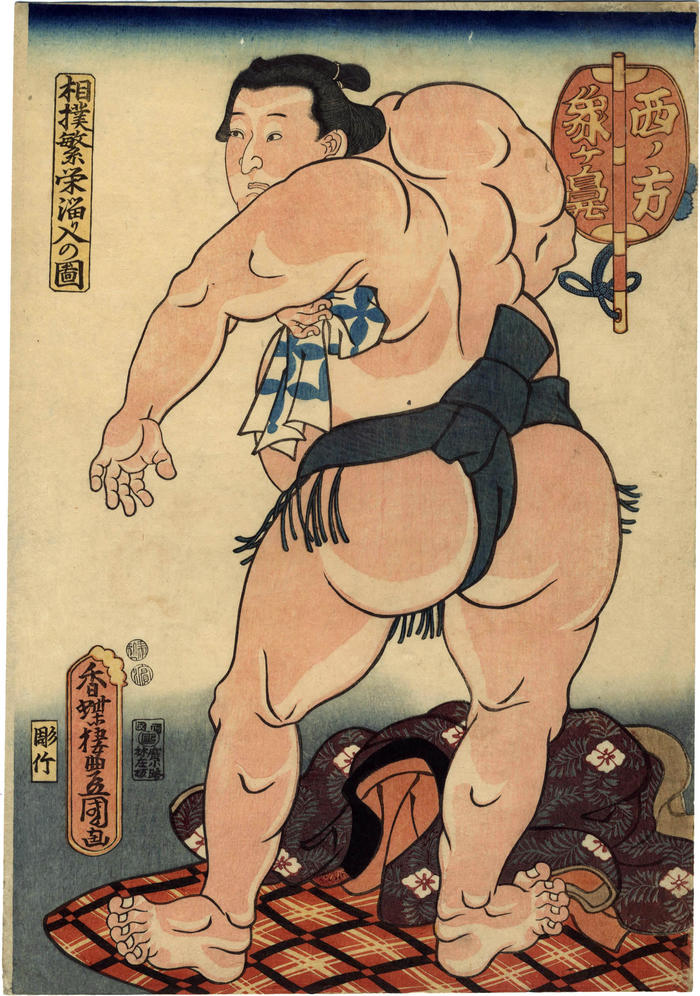Utagawa Kunisada (歌川国貞) / Toyokuni III (三代豊国) (artist 1786 – 01/12/1865)
Zōgabana (象ヶ鼻) from the series 'Prosperous Sumō Wrestling' (Sumō hanei tamari iri no zu - 相撲繁栄り入の図) - Nishi no kata (西ノ方)
1852
10 in x 14.5 in (Overall dimensions) Japanese woodblock print
Signed: Kōchōrō Toyokuni ga
香蝶楼豊国画
Publisher: Hayashiya Shōgorō
(Marks 106 - similar to seal 22-049)
Censor seals: Hama and Magome
Carver: Hori Take (彫竹)
Waseda University
Kunisada.de
Van Gogh Museum - credit to the Guimet Museum Hiraishi (平石) attained the highest rank, the maku-uchi, in 1852. He used this name from 1850-54 and retired in 1858. "During the Edo Jidai the highest-ranking sumotori waited for their bouts seated behind a curtain (maku no uchi). The makunouchi division is the tip division in sumo.... There is a break in the daily activities before the makunouchi matches." Those who reach this rank have almost twice as many bouts as lower ranking wrestlers. And, those who are recently raised to the highest level are always particularly anxious to prove themselves to the public and their peers.
Source and quote from: The Essential Guide to Sumo by Dorothea Buckingham, pp. 124-125. (JSV)
Nishi no kata (西ノ方) means 'Western league' or division. (JSV)
This print from the Lyon Collection is only one from a series of indeterminate size by Kunisada. Several other examples are in the collection of the National Diet Library, Tokyo. They are brilliant in their variant representations of great contemporary wrestlers.
Hayashiya Shōgorō (林屋庄五郎) (publisher)
sumō (相撲) (genre)
Yokokawa Takejirō (横川彫武) (carver)
